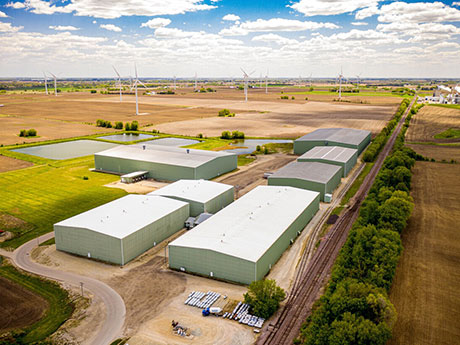By David Hodge, NAI Greywolf
The demand for commercial industrial real estate was exceedingly strong in the Milwaukee market leading up to the onset of COVID-19. The economy and labor markets were also strong and incentives for onshoring spurred on this growth. Post-pandemic commercial industrial product continues its upward trend.
The catalyst for this, however, is international supply chain disruptions. The reaction to this unfortunate circumstance is the accumulation of higher inventories of raw material and finished goods. The resulting impact is high demand, especially for warehouses, in an extremely low vacancy rate environment.
Demand beating inventory
According to Catylist, in the second quarter of 2022, the Milwaukee market’s vacancy rates were 3.3 percent for all commercial industrial products. This is largely due to the continued lack of available inventory. High demand in part has spurred increases in rental rates to approximately $5.98 per square foot triple net.
While this is good news for landlords who look to capitalize, it presents challenges for tenants who are expanding their operations.
The other factor driving rental rates is the rapid increase in interest rates. The upcoming election may also affect the rates in the later part of the fourth quarter of 2022 and into 2023; but, we expect there to be continued pain in the industrial market before things start to move in a more positive direction.
Finally, there is the consideration of building. Unfortunately, one of the other negative impacts from supply chain disruption is the scarcity of building materials and labor. This scarcity has increased the cost of construction, and coupled with rising interest rates, makes building a less desirable and unlikely option.
Third-party logistics
Low vacancies, increased rates and increased costs of construction have caused decision makers to finally turn toward the most cost-effective way to store, manage and transport their raw materials and finished goods: third-party logistics.
Third-party logistics companies like Friesland, Wisconsin-based Cuprey & De Young, for example, typically have properties with high ceilings, are food-grade and are accessible by over the road (OTR) and rail. Their onsite logistics team works hand-in-hand with customers to store and coordinate shipping at a reduced cost.
The value is companies turning to these third-party logistics companies to expertly handle that which is not core to their business. By pallet or by square foot, the flexibility is there to relieve operational constraints and reduce costs. Hence no need to build, lease or employ additional labor in the short run during this unfortunate market cycle.
Outlook
For the rest of 2022, and likely into 2023, we expect the Milwaukee market to continue to face extremely low vacancies and higher rental rates until new construction catches up.
Until then, it is time for us to explore all options like third-party logistics to get back on course to profitable growth. Perhaps outsourcing non-core operations will allow us to focus more ardently on the things that matter most.
David Hodge is an advisor with NAI Greywolf. This article originally appeared in the November 2022 issue of Heartland Real Estate Business magazine.



